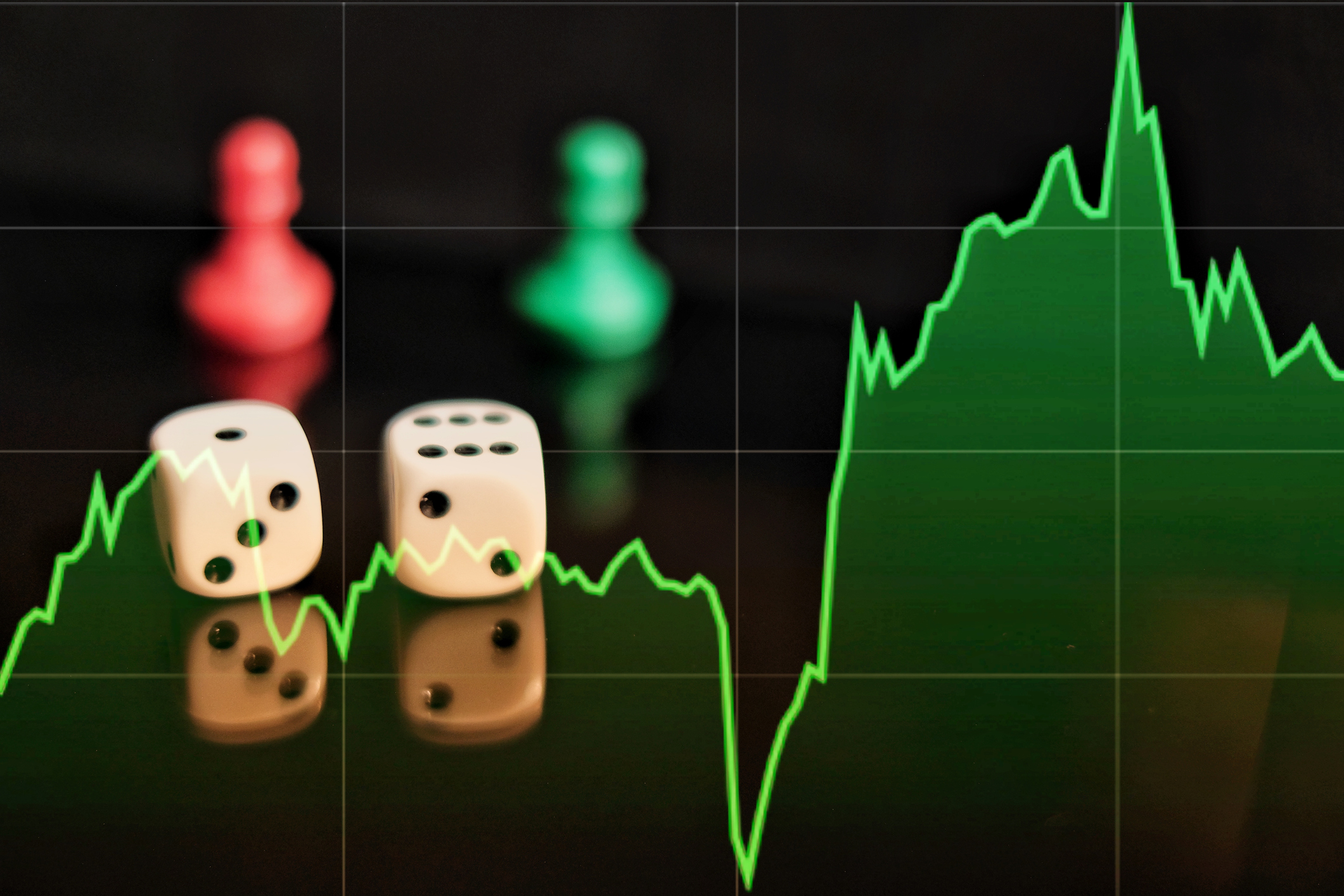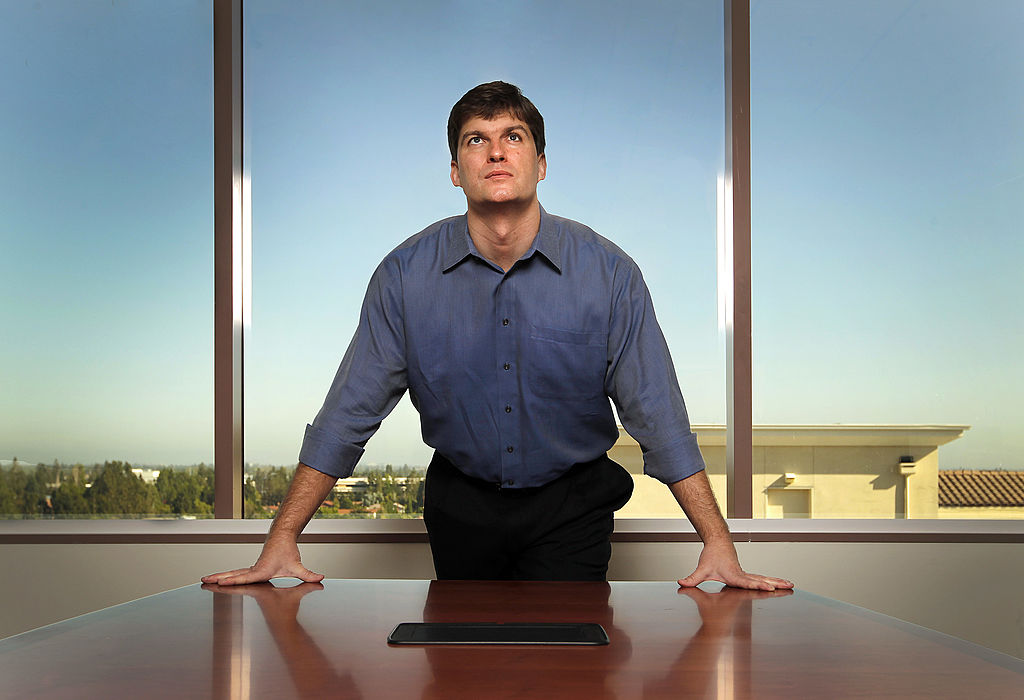Share buybacks rise in the UK – what effect will it have?
Share buybacks used to be rare in the UK, but are now gaining popularity. That's good news for investors


Companies have three different ways of using profit or excess capital generated from the business. The first is reinvesting money into the company if the potential return on invested capital is attractive. This will vary from firm to firm and ultimately depend on the overall cost of capital. If the cost of capital is higher than the potential return on invested capital, it does not make sense to reinvest back into the business. Instead, the company should consider the second method of using excess money: debt repayment.
If a company calculates that an expansion project will only generate a 10% return on invested capital, but its outstanding debt has an interest rate of 12%, using the available capital to reduce borrowing would make more sense. If a company cannot find any good expansion opportunities (including mergers) and has a relatively low level and cost of borrowing, then it can turn to a third option – returning cash to investors. Two of the most common ways to return capital are dividends and share repurchases. Both accomplish the same goal of returning capital, but each approach has different benefits and drawbacks.
Why are share buybacks rising in the UK?
Share buybacks used to be rare in the UK. Traditionally, UK companies have preferred to return cash to investors via dividends, but that has changed in the past five years. In fact, in 2022, for the first time on record, the percentage of large UK companies buying back shares matched the proportion of large US companies doing so at 38%, according to wealth management giant Schroders. The trend continued in 2023.
MoneyWeek
Subscribe to MoneyWeek today and get your first six magazine issues absolutely FREE

Sign up to Money Morning
Don't miss the latest investment and personal finances news, market analysis, plus money-saving tips with our free twice-daily newsletter
Don't miss the latest investment and personal finances news, market analysis, plus money-saving tips with our free twice-daily newsletter
On one metric, British companies have not only matched but outperformed their US peers. Last year, 13% of large UK companies bought back at least 5% of their shares, compared with 9% in the US. This trend isn’t purely a UK phenomenon. All major developed markets have seen an uptick in share-buyback activity over the past few years.
The growing use of share buybacks has coincided with the unrelenting outperformance of the US market. As the valuation gap between US equities and the rest of the world has grown, companies in smaller developed markets have rushed to try to return as much capital as possible to their shareholders to reduce some of the valuation gap – with mixed success.
Repurchasing shares makes sense when a company looks cheap compared to its competitors. Dividends return money to investors by paying out capital. Once the capital has been paid out to investors, the company no longer has any oversight or control over the money. Shareholders can do as they see fit with the funds.
This is the primary reason why Warren Buffett, the US billionaire investor, has largely refused to initiate dividends at his holding company, Berkshire Hathaway. As he told shareholders in 1997: “We don’t pay dividends because we think we can turn every dollar we retain into more than a dollar of market value… If we come to the conclusion that we can’t do that, and we could come to that conclusion sometime, then we should distribute it to you.”
There are other major drawbacks associated with the dividend-first approach to returning cash to investors. Dividends are taxed differently to share buybacks. In the UK, dividends are paid out of profit after the deduction of corporation tax. They are then taxed again when paid out to investors. Investors have no choice as to when they receive the dividend or when the tax is due.
The second significant drawback is the removal of cash from the business. Dividends are paid to shareholders on the register at the time of the record and ex-dividend date. It doesn’t matter if you’ve held the company for a decade or a day or intend to hold it for a decade or a day. If you’re an investor who thinks you can invest the capital elsewhere at a higher rate of return, then that’s great but for investors who remain with the business or decide to reinvest dividends, they’re sticking with a business financially weaker than it was just a few days before.
In theory, this should not be the case. Management should only return cash to investors if they believe the company is financially robust enough to withstand unforeseen shocks and will replenish its capital reserves. However, managers often get stuck in a “progressive dividend trap”, whereby they commit the company to regular dividend payouts increasing every fiscal period and tie their reputation to the commitment, eliminating all flexibility.
What are dividend traps?
History is littered with examples of companies that have fallen into the progressive dividend trap. In 2015, miners such as BHP came under fire for trying to maintain their progressive dividends amid a downturn in commodity prices. Credit downgrades followed and Glencore, the biggest loser, had to cancel its dividend and go cap in hand to shareholders for more cash to strengthen its balance sheet.
In 2019, Marks & Spencer launched a £600 million cash call to fund its joint venture with Ocado, despite having paid out roughly £1.6 billion in dividends over the previous five years (and £300 million in 2019). The company then cut the dividend entirely to save money in 2020 when the pandemic roiled the economy.
In May 2020, BT also cut its dividend for the first time since its privatisation in 1984, although the pandemic wasn’t responsible. Management decided the dividend cut was the best course of action to free up cash to invest in the company’s fibre broadband and 5G network. The cut freed up £2.5 billion a year. BT had been prioritising shareholders’ returns at the expense of capital investment, and the business is still suffering from this hangover today.
Share buybacks have similar drawbacks. Managers can still end up spending more on buybacks than a company can realistically afford. However, share buybacks are a lot more flexible as they tend to come in blocks – for example, £100 million to be spent over the period of a year with no commitment before or after to return additional capital. Buybacks can also be turned off. If a management team commits to spending £100 million, spends £30 million and then realises it wants to buy a competitor, it can stop the buyback. You can’t do that with a dividend. Once the £100 million is spent, it’s gone. For example, publisher Pearson halted a £350 million buyback in mid-2020 to preserve cash after spending half the outstanding authorisation. British American Tobacco halted buybacks at the beginning of 2023 to focus on lowering debt. HSBC stopped buying back shares in 2022 owing to economic uncertainty.
Of course, there are examples of companies that go the other way. General Electric and Boeing are two egregious examples. General Electric spent $53.9 billion over the decade to 2019, repurchasing just over two billion shares. Burning through all that cash left the company’s balance sheet in a vulnerable position, resulting in the stock losing more than 80% of its value.
Meanwhile, Boeing spent $43 billion on stock buybacks between 2013 and 2019 while skimping on investment and borrowing billions. What does the company have to show for this spending? It’s bleeding money, and the shares have slumped 66% from their March 2019 high. Boeing has also launched a $24.3 billion cash call to shore up its balance sheet and undo some of the damage from spending too much on buybacks.
When abused, buybacks can be just as damaging as dividends. But if used correctly as part of a watertight capital allocation framework, they’re much more flexible and tax-efficient, put the balance sheet under less strain, and benefit all investors, not just those on the register on a particular date.
Why do companies do share buybacks?
Companies often view buybacks as part of a capital return strategy. Adopting a dividend policy, with buybacks and special dividends to supplement returns, provides a great deal of flexibility and predictability for shareholders. If a company is using multiple ways to return cash to investors, the best metric to use to understand how much capital is being returned overall is the total shareholder yield ratio.
Total shareholder yield works in the same way as the dividend yield metric. It’s the sum of all the cash being paid out to shareholders, via regular and special dividends, as well as buybacks, divided by a company’s market capitalisation. Analysts often work out the total value of the cash return, divided by the number of shares in issue, to give a per share figure, which is easier to compare to the standalone dividend payout.
Imperial Brands (LSE: IMB) has one of the FTSE 100’s (and the UK market’s) most aggressive share buyback and dividend programmes. The company has outlined plans to return £2.8 billion to shareholders in its current fiscal year (to September 2025), split between dividends and buybacks. That’s equivalent to a total shareholder yield of 12.9%.
With Imperial Brands trading at a mid-single-digit price-to-earnings (p/e) ratio, it makes sense for the company to buy back as much stock as possible. And thanks to its aggressive buying in the market (the company’s bought back around 12% of its total outstanding shares since October 2022), Imperial Brands has outperformed both Apple and Microsoft on a total return basis over the past 12 months – by more than 30% in the case of Microsoft.
Next (LSE: NXT) is another London-listed buyback champion. Next has a cardinal rule that buybacks should be funded from surplus capital, and it has strict rules governing when buybacks should be used to generate the best returns for investors. In 2024, the company earmarked £306 million for buybacks and £259 million for dividends, a total shareholder yield of 4.6%. Buybacks have added a percentage point or two to annual earnings-per-share growth, which has helped the stock to a total return of 13.3% per annum over the past 15 years.
Are buybacks key to outperformance?
Imperial’s performance isn’t a one-off. A good volume of evidence points to the conclusion that sensible buyback strategies drive outperformance. Ratings agency S&P published one of the most comprehensive reports on the topic in mid-2020. The report looked back at the performance of companies buying back stock, as defined by the S&P 500 Buyback Index, over the 20 years ending December 2019. The S&P 500 Buyback Index seeks to track the 100 companies in the S&P 500 with the highest buyback ratio in the trailing 12-month period. The report also compared the Buyback Index’s performance to the S&P 500 Dividend Yield Portfolio and the S&P 500 Shareholder Yield Portfolio.
The researchers at S&P found that over a 20-year period, the S&P 500 Buyback Index outperformed the S&P 500 by a wide margin, returning 11.5% annualised compared with a return of 6.1% for the benchmark. The dividend yield portfolio also outperformed, with an annual return of 9.9%. However, the best performance came from a combined dividend-buyback approach. The S&P 500 Shareholder Yield index returned 12.1%, nearly doubling the benchmark’s performance over the two-decade period.
S&P also found that the S&P 500 Buyback Index outperformed the S&P 500 in both up and down months, and most of the return from the Buyback Index and Shareholder Yield portfolios came from capital returned (85% and 78%, respectively, compared with 55.9% for the yield portfolio) rather than a rising share price.
The US hedge fund manager Mohnish Pabrai took this research a step further in 2016. Writing in Forbes, he introduced a strategy called the “Uber Cannibals”. To qualify, a company had to have a record of spending twice as much on buybacks as dividends and had retired 3% or more of its shares in the previous 12-month period. Pabrai found that, between 1996 and 2016, these Uber Cannibals had returned 15.5% per annum, eclipsing the return of the S&P 500 Buyback Index and the wider market.
Most of the evidence about buybacks and performance comes from US markets, where buybacks have a longer history. However, with repurchases now gaining traction in the UK and other markets around the world, it seems likely that this performance will be repeated in other markets.
Which UK companies are buying back shares?
In the UK, banks have become some of the most aggressive buyers of their own shares. NatWest Group (LSE: NWG) has bought back over 20% of its shares since 2020. It outlined a £350 million buyback at the beginning of 2024 and has added to this with £2.2 billion of buybacks from the UK government’s stake, which has now fallen to 11.4%.
On top of the company’s 4.7% regular dividend yield, the repurchases put the total shareholder yield at roughly 12% for the year. Over the past three years, NatWest has produced a total return of 26.6% per year. Meanwhile, Barclays (LSE: BARC) is midway through a plan to return £10 billion of capital to shareholders between 2024 and 2026 – 26% of its market value. The market is only just starting to wake up to the opportunity here. The stock has returned 77% on a total-return basis year to date and 15.8% per annum over the past three years.
The FTSE 100 is full of companies pursuing a similar approach, although not as aggressively as NatWest, Barclays and Imperial. BP (LSE: BP) and Shell (LSE: SHEL) have laid out plans to ramp up shareholders’ returns, with the latter having committed to $3.5 billion of buybacks in the fourth quarter after completing a similar authorisation earlier in the year.
Insurer Aviva (LSE: AV) has been returning cash to investors for the past three years after a change of strategy under Amanda Blanc. In March, the company announced the next stage of its cash returns, a £300 million buyback on top of the regular dividend. The stock currently yields 7.3%.
Hotels group IHG (LSE: IHG) has had a mixed couple of years following the pandemic, but its announcement of an $800 million buyback in February this year marked a turning point. The cash return followed a $750 million buyback and $250 million dividend payout in 2023, 10% of the company’s opening market value (it ultimately retired 6.1% of its outstanding shares in the year). The additional buyback and dividends paid in 2024 will mean the company has returned close to 20% of its January 2023 market value in two years. It has produced a total return of 31.6% annualised over the past three years and 15.2% over the past five.
This article was first published in MoneyWeek's magazine. Enjoy exclusive early access to news, opinion and analysis from our team of financial experts with a MoneyWeek subscription.
Get the latest financial news, insights and expert analysis from our award-winning MoneyWeek team, to help you understand what really matters when it comes to your finances.

Rupert is the former deputy digital editor of MoneyWeek. He's an active investor and has always been fascinated by the world of business and investing. His style has been heavily influenced by US investors Warren Buffett and Philip Carret. He is always looking for high-quality growth opportunities trading at a reasonable price, preferring cash generative businesses with strong balance sheets over blue-sky growth stocks.
Rupert has written for many UK and international publications including the Motley Fool, Gurufocus and ValueWalk, aimed at a range of readers; from the first timers to experienced high-net-worth individuals. Rupert has also founded and managed several businesses, including the New York-based hedge fund newsletter, Hidden Value Stocks. He has written over 20 ebooks and appeared as an expert commentator on the BBC World Service.
-
 The war dividend – how to invest in defence stocks as the world arms up
The war dividend – how to invest in defence stocks as the world arms upWestern governments are back on a war footing. Investors should be prepared, too, says Jamie Ward
-
 Literacy Capital: A trust where great returns fund a good cause
Literacy Capital: A trust where great returns fund a good causeThere’s plenty to like about specialist private-equity trust Literacy Capital, says Max King
-
 An AI bust could hit private credit – could it cause a financial crisis?
An AI bust could hit private credit – could it cause a financial crisis?Opinion Private credit is playing a key role in funding data centres. It may be the first to take the hit if the AI boom ends, says Cris Sholto Heaton
-
 Leading European companies offer long-term growth prospects
Leading European companies offer long-term growth prospectsOpinion Alexander Darwall, lead portfolio manager, European Opportunities Trust, picks three European companies where he'd put his money
-
 How to harness the power of dividends
How to harness the power of dividendsDividends went out of style in the pandemic. It’s great to see them back, says Rupert Hargreaves
-
 Why Trustpilot is a stock to watch for exposure to the e-commerce market
Why Trustpilot is a stock to watch for exposure to the e-commerce marketTrustpilot has built a defensible position in one of the most critical areas of the internet: the infrastructure of trust, says Jamie Ward
-
 Reinventing the high street – how to invest in the retailers driving the change
Reinventing the high street – how to invest in the retailers driving the changeThe high street brands that can make shopping and leisure an enjoyable experience will thrive, says Maryam Cockar
-
 Big Short investor Michael Burry closes hedge fund Scion Capital
Big Short investor Michael Burry closes hedge fund Scion CapitalProfile Michael Burry rightly bet against the US mortgage market before the 2008 crisis. Now he is worried about the AI boom